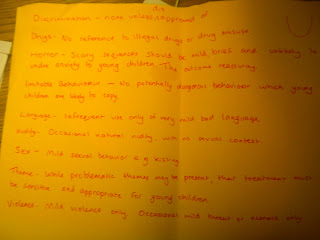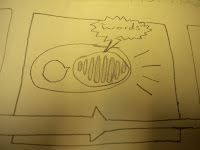Tim Burton's Corpse Bride

 The opening sequence of The Corpse Bride focuses mainly on a Butterfly, flying around a village, showing characters and secenery. What is most noticable is that the Butterfly is the only thing in colour, everything else is black and white. The titles are placed over the picture and follow this pattern as well, being white in colour. These titles mainly focus on the Actors/Actresses providing their voices for the film, as well as the usual "Warner Bros Pictures Presents" at the start. The font itself is striking, mainly due to the spiky spirals on some letters. The spiral is a reccuring image in the film, with tops of towers, grass and even beards being spiral shapes. The spiral is also an image in The Nightmare Before Christmas, one of Burton's other films. For our titles, we plan to find a font similar in style, as we are making a horror/comedy film opening. We will possibly use white, but may use a colour that stands out more, for example red and our titles will include an imaginary production company name, our names and the name of the Film.
The opening sequence of The Corpse Bride focuses mainly on a Butterfly, flying around a village, showing characters and secenery. What is most noticable is that the Butterfly is the only thing in colour, everything else is black and white. The titles are placed over the picture and follow this pattern as well, being white in colour. These titles mainly focus on the Actors/Actresses providing their voices for the film, as well as the usual "Warner Bros Pictures Presents" at the start. The font itself is striking, mainly due to the spiky spirals on some letters. The spiral is a reccuring image in the film, with tops of towers, grass and even beards being spiral shapes. The spiral is also an image in The Nightmare Before Christmas, one of Burton's other films. For our titles, we plan to find a font similar in style, as we are making a horror/comedy film opening. We will possibly use white, but may use a colour that stands out more, for example red and our titles will include an imaginary production company name, our names and the name of the Film. 
























